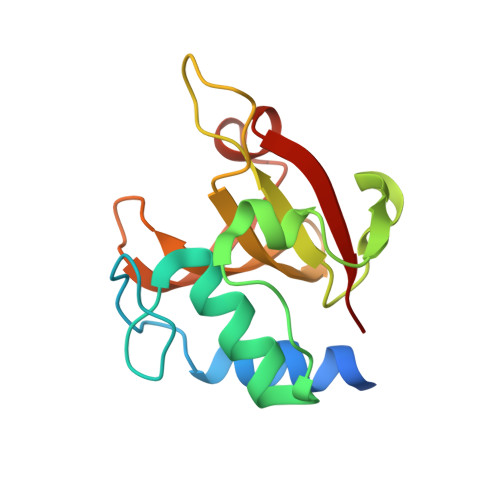Structural and biochemical characterizations of the novel autolysin Acd24020 from Clostridioides difficile and its full-function catalytic domain as a lytic enzyme.
Sekiya, H., Tamai, E., Kawasaki, J., Murakami, K., Kamitori, S.(2021) Mol Microbiol 115: 684-698
- PubMed: 33140473
- DOI: https://doi.org/10.1111/mmi.14636
- Primary Citation of Related Structures:
7CFL - PubMed Abstract:
Autolysin is a lytic enzyme that hydrolyzes peptidoglycans of the bacterial cell wall, with a catalytic domain and cell wall-binding (CWB) domains, to be involved in different physiological functions that require bacterial cell wall remodeling. We identified a novel autolysin, Acd24020, from Clostridioides (Clostridium) difficile (C. difficile), with an endopeptidase catalytic domain belonging to the NlpC/P60 family and three bacterial Src-homology 3 domains as CWB domains. The catalytic domain of Acd24020 (Acd24020-CD) exhibited C. difficile-specific lytic activity equivalent to Acd24020, indicating that Acd24020-CD has full-function as a lytic enzyme by itself. To elucidate the specific peptidoglycan-recognition and catalytic reaction mechanisms of Acd24020-CD, biochemical characterization, X-ray structure determination, a modeling study of the enzyme/substrate complex, and mutagenesis analysis were performed. Acd24020-CD has an hourglass-shaped substrate-binding groove across the molecule, which is responsible for recognizing the direct 3-4 cross-linking structure unique to C. difficile peptidoglycan. Based on the X-ray structure and modeling study, we propose a dynamic Cys/His catalyzing mechanism, in which the catalytic Cys299 and His354 residues dynamically change their conformations to complement each step of the enzyme catalytic reaction.
Organizational Affiliation:
Department of Infectious Disease, College of Pharmaceutical Science, Matsuyama University, Matsuyama, Japan.















